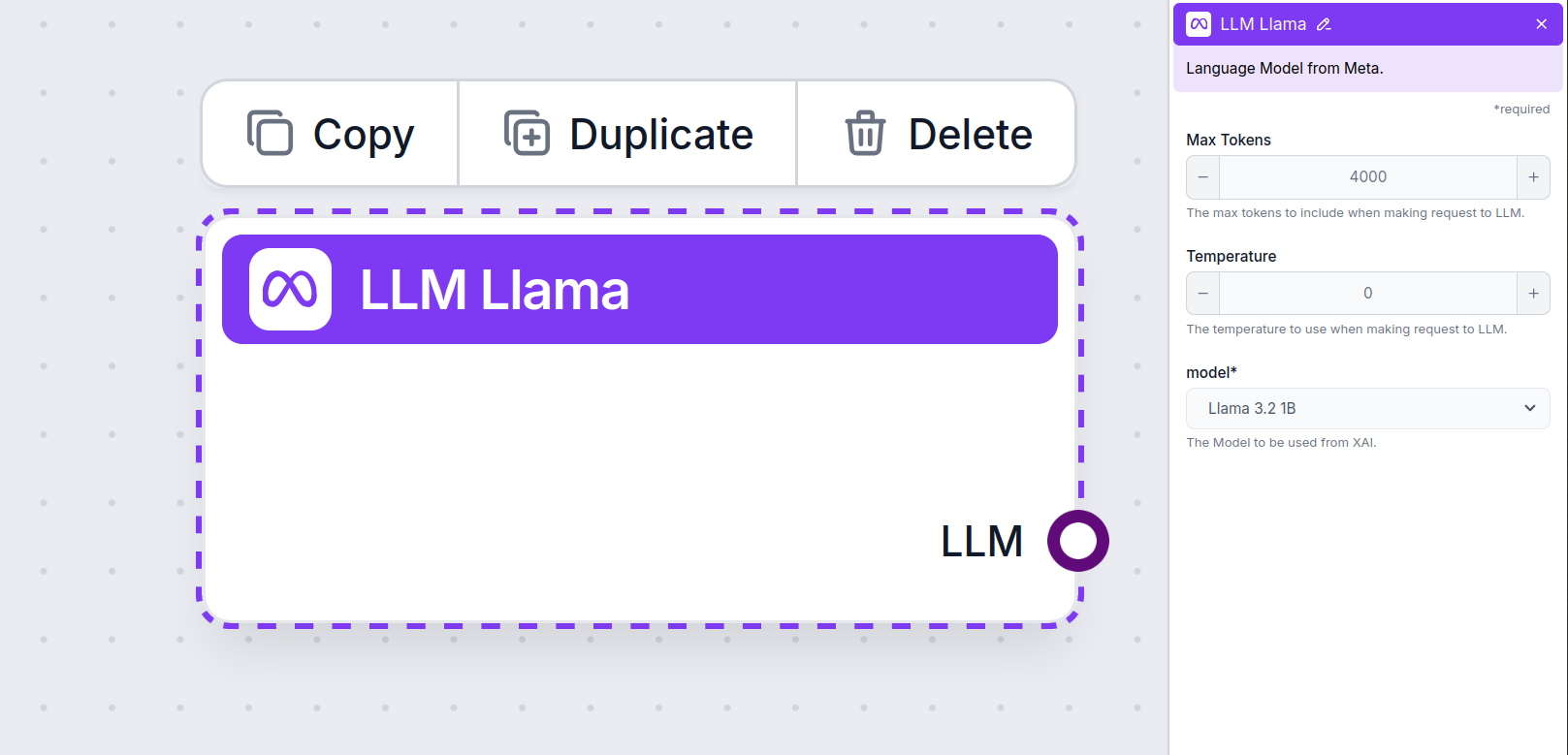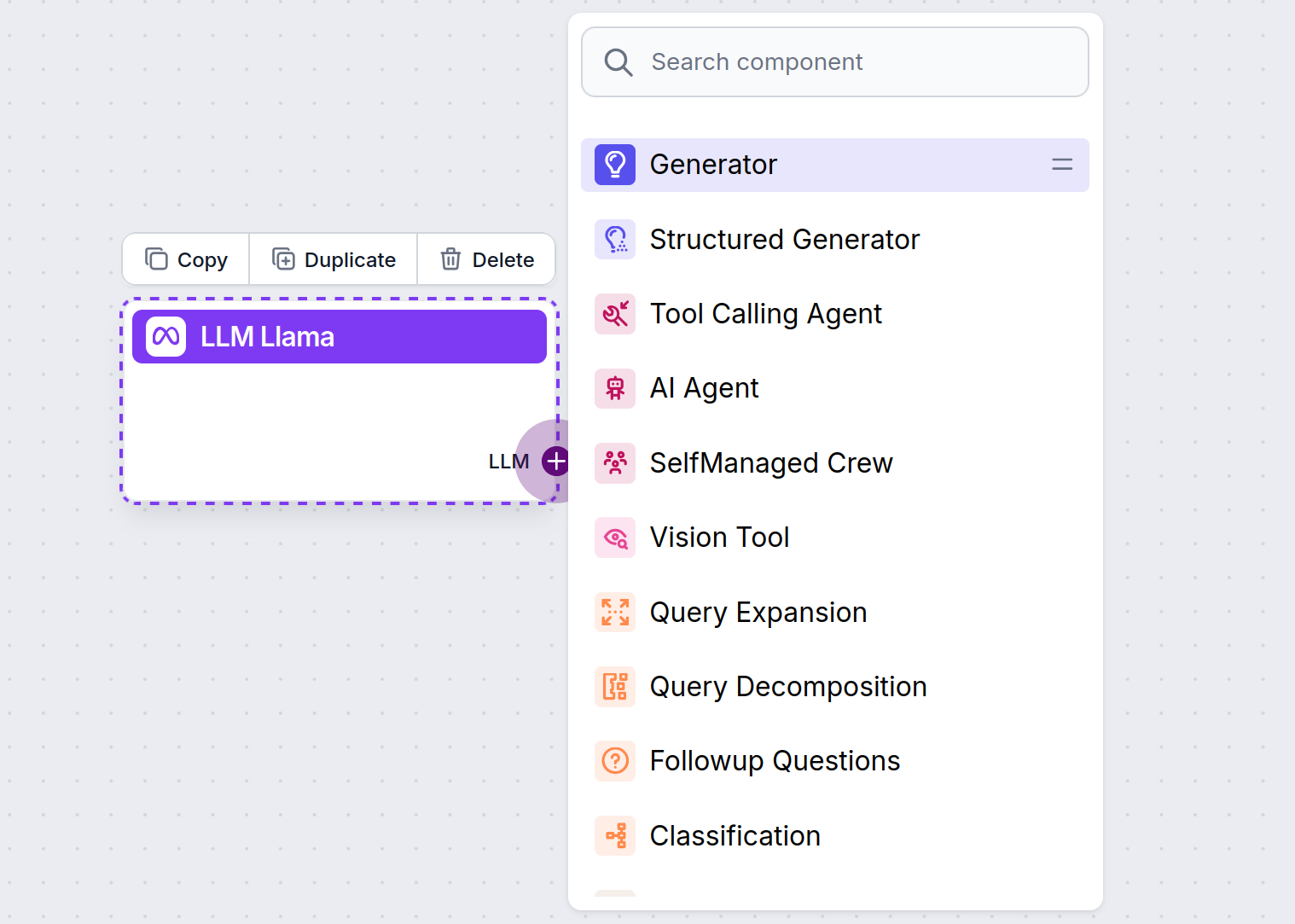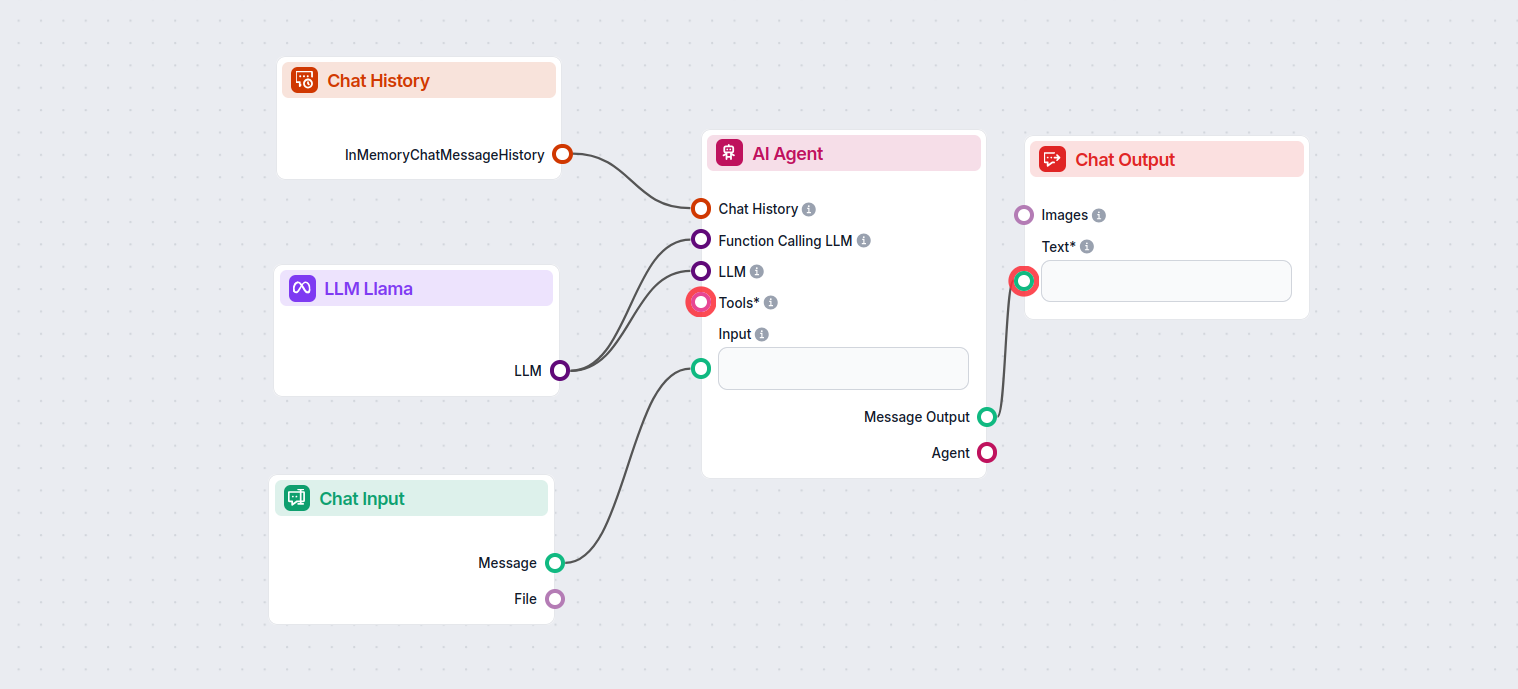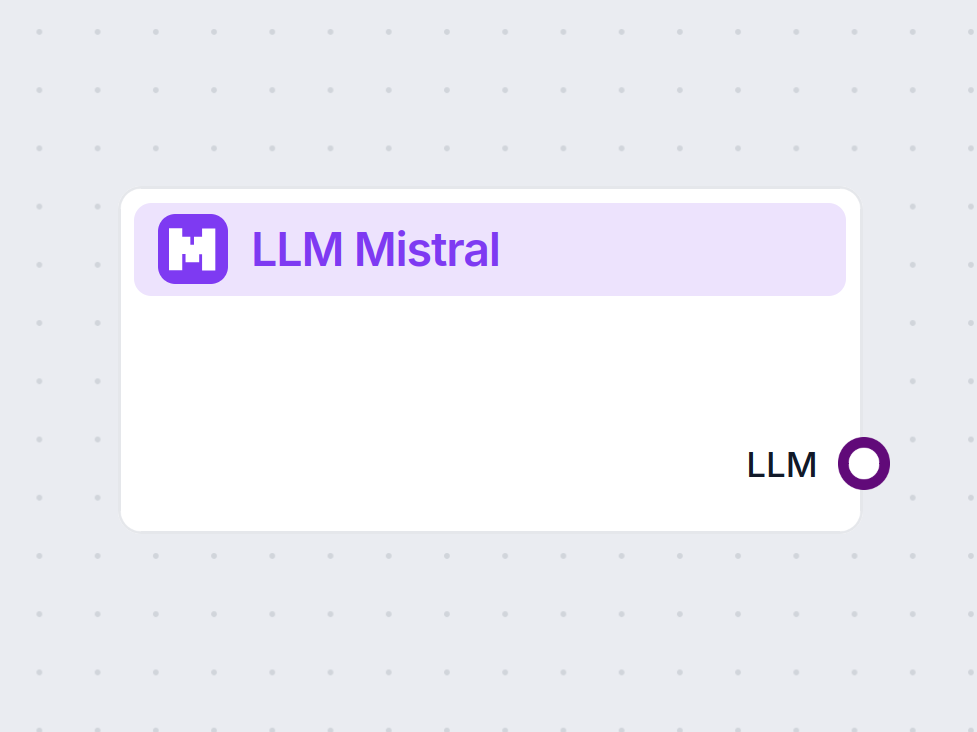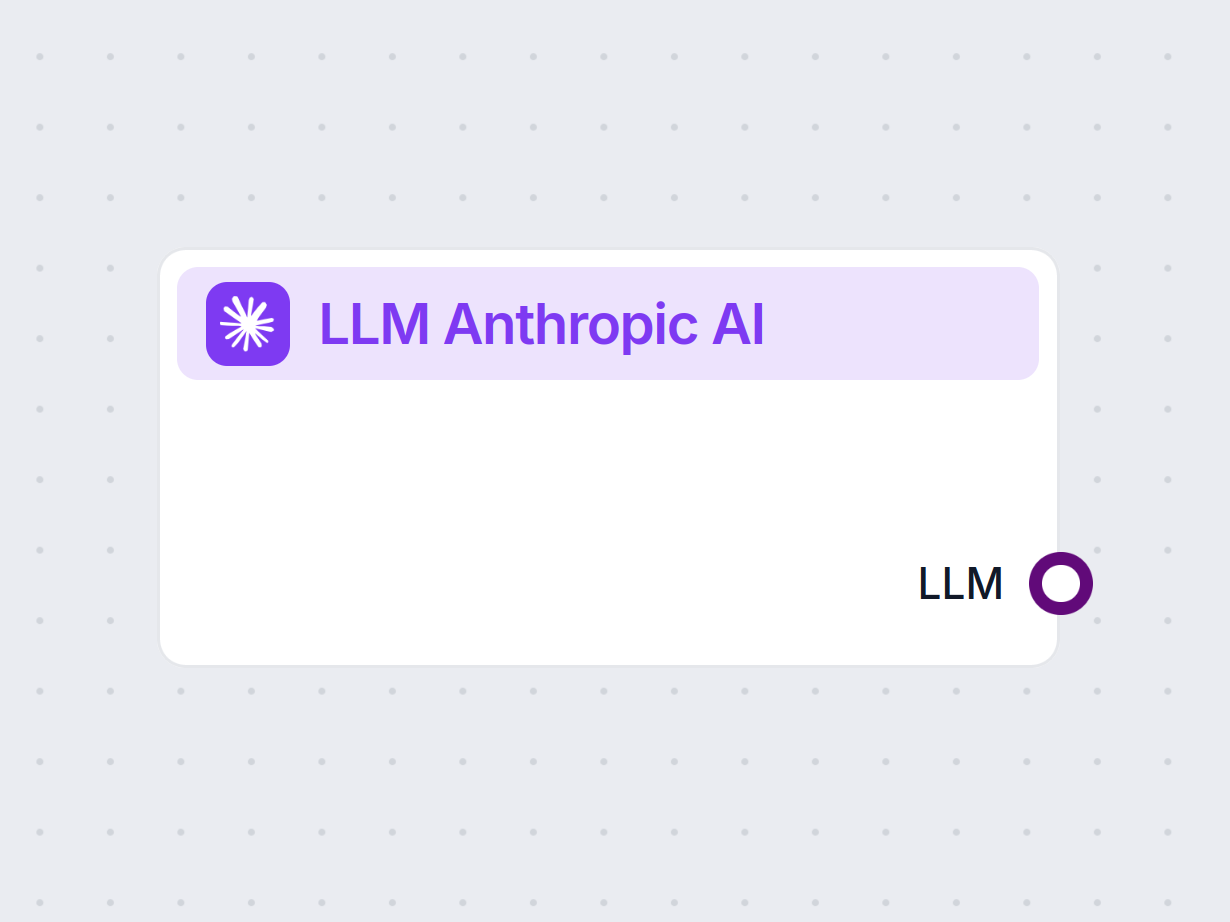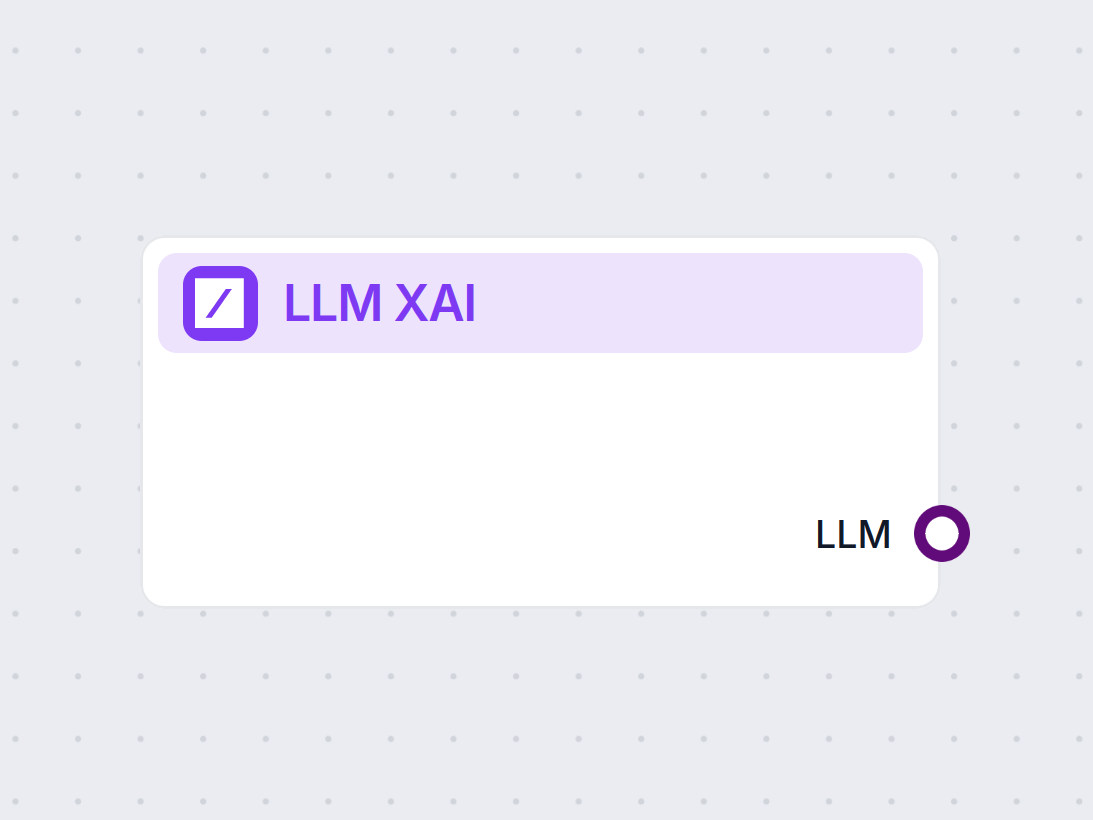
LLM xAI
FlowHunt unterstützt Dutzende von Textgenerierungsmodellen, einschließlich der Modelle von xAI. Hier erfahren Sie, wie Sie die xAI-Modelle in Ihren KI-Tools und...
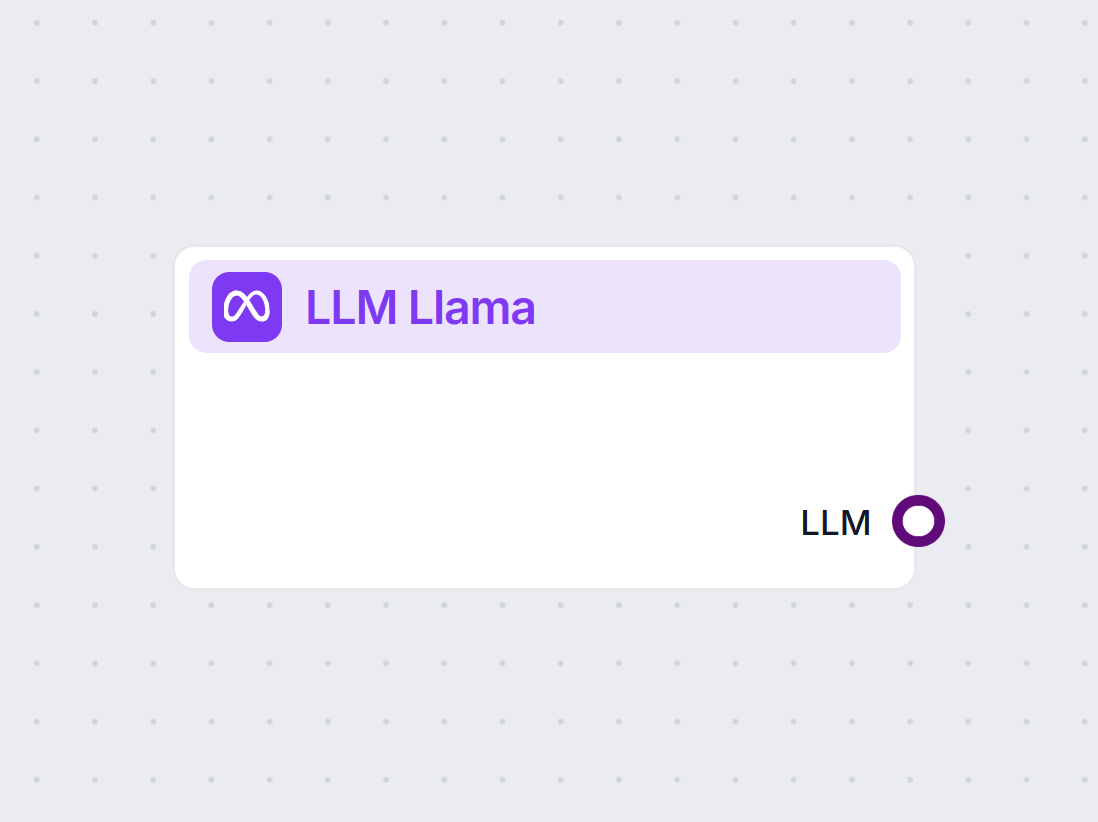
FlowHunts LLM Meta AI vereint Metas Llama-Modelle und Dutzende anderer KI-Modelle in einem einzigen, leicht steuerbaren Dashboard für flexible Text- und Bildgenerierung.
Komponentenbeschreibung
The LLM Meta AI component connects the Claude family of model to your Flow. While the Generators and Agents are where the actual magic happens, LLM components allow you to control the used model. All components come with ChatGPT-4 by default. You can connect this component if you wish to change the model or gain more control over it.
Remember that connecting an LLM Component is optional. All components that use an LLM come with ChatGPT-4o as the default. The LLM components allow you to change the model and control model settings.
Tokens represent the individual units of text the model processes and generates. Token usage varies with models, and a single token can be anything from words or subwords to a single character. Models are usually priced in millions of tokens.
The max tokens setting limits the total number of tokens that can be processed in a single interaction or request, ensuring the responses are generated within reasonable bounds. The default limit is 4,000 tokens, the optimal size for summarizing documents and several sources to generate an answer.
Temperature controls the variability of answers, ranging from 0 to 1.
A temperature of 0.1 will make the responses very to the point but potentially repetitive and deficient.
A high temperature of 1 allows for maximum creativity in answers but creates the risk of irrelevant or even hallucinatory responses.
For example, the recommended temperature for a customer service bot is between 0.2 and 0.5. This level should keep the answers relevant and to the script while allowing for a natural response variation.
This is the model picker. You’ll find all the supported models from Meta AI here. We support Meta’s open-source lightweight Llama models. These models are designed for efficient on-device and edge deployments:
You’ll notice that all LLM components only have an output handle. Input doesn’t pass through the component, as it only represents the model, while the actual generation happens in AI Agents and Generators.
The LLM handle is always purple. The LLM input handle is found on any component that uses AI to generate text or process data. You can see the options by clicking the handle:
This allows you to create all sorts of tools. Let’s see the component in action. Here’s a simple AI Agent chatbot Flow that’s using Meta AI’s Llama 3.2 1B to generate responses. You can think of it as a basic Llama chatbot.
This simple Chatbot Flow includes:
Die LLM Meta AI-Komponente ermöglicht es Ihnen, Metas Llama-Modelle und andere Text-/Bildgeneratoren mit Ihren Flows zu verbinden. So können Sie das Modell einfach auswählen und erweiterte Einstellungen wie maximale Tokenanzahl und Temperatur konfigurieren.
FlowHunt unterstützt Metas Open-Source-Llama-Modelle, einschließlich Llama 3.2 1B und 3B, die für Effizienz, Zusammenfassungen und On-Device-Deployments optimiert sind.
Sie können Einstellungen wie maximale Tokenanzahl (begrenzt die Antwortlänge), Temperatur (steuert die Kreativität der Antworten) und die Modellauswahl direkt im FlowHunt-Dashboard für jede Komponente anpassen.
Nein, das Hinzufügen der LLM Meta AI-Komponente ist optional. Standardmäßig verwenden die Komponenten ChatGPT-4o, aber Sie können für mehr Kontrolle oder spezielle Anwendungsfälle zu Llama oder anderen Modellen wechseln.
FlowHunt unterstützt Dutzende von Textgenerierungsmodellen, einschließlich der Modelle von xAI. Hier erfahren Sie, wie Sie die xAI-Modelle in Ihren KI-Tools und...
FlowHunt unterstützt Dutzende von KI-Textmodellen, einschließlich der Modelle von Mistral. Hier erfahren Sie, wie Sie Mistral in Ihren KI-Tools und Chatbots ver...
FlowHunt unterstützt Dutzende von KI-Modellen, einschließlich der Claude-Modelle von Anthropic. Erfahren Sie, wie Sie Claude in Ihren KI-Tools und Chatbots mit ...
Cookie-Zustimmung
Wir verwenden Cookies, um Ihr Surferlebnis zu verbessern und unseren Datenverkehr zu analysieren. See our privacy policy.
